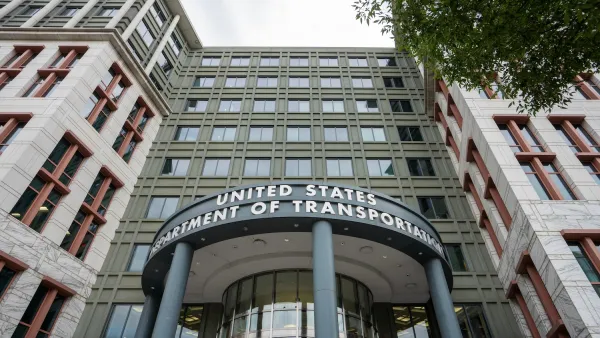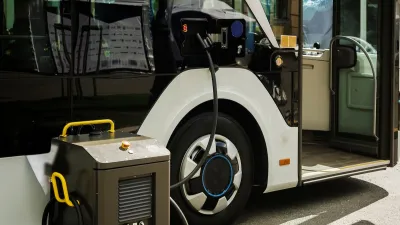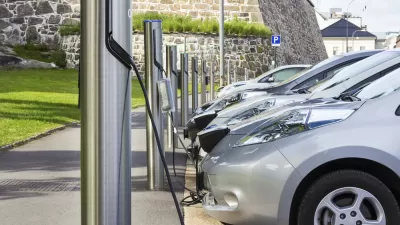The dream of high-quality, zero-emission transit in all large U.S. cities is possible.

Yonah Freemark writes for the Urban Institute about what it would take for the federal government to effectively invest in zero-emission transportation at the local level, as prioritized by the campaign platform of President-elect Joe Biden and written into the Moving Forward Act, dormant in Congress after clearing the U.S. House of Representatives in July of this year.
Freemark's examination of the question of what it would take to deliver high-quality public transit starts with the current realities of transit in the country, finding wide disparities by geographic area and social and demographic markers.
For many low-income people and people of color, transit offerings are often subpar and access is unfairly distributed: the amount of transit service typically provided is 37 percent less comprehensive in the quartile of urban areas with the highest poverty rates, compared with their wealthiest counterparts, adjusted for population. Transit access is roughly 24 percent worse in the quartile of urban areas with the most Black residents, compared with those with the fewest.
Turning attention then to how effective transit investments would be given disparities in transit quality, Freemark estimates the cost of increasing transit service quantity in all urban areas with 100,000 or more residents, using
Chicago, Dallas, Los Angeles, New York City, and Washington, D.C. as goal posts.
Improving transit quality in every urban area to, at minimum, conditions in the Dallas region would cost an additional $2.2 billion annually. This would be a 4.5 percent increase nationally in operating budgets but would expand per capita transit service by 30.3 percent for the average urban area. Improving minimum transit quality to Chicago’s level would cost $16.7 billion but would more than double average per capita transit service provided throughout the country.
After factoring in zero-emission electric vehicles, Freemark concludes that high quality transit in the United States is possible.
FULL STORY: What Would Providing Every City with High-Quality, Zero-Emissions Public Transportation Look Like?

Planetizen Federal Action Tracker
A weekly monitor of how Trump’s orders and actions are impacting planners and planning in America.

Congressman Proposes Bill to Rename DC Metro “Trump Train”
The Make Autorail Great Again Act would withhold federal funding to the system until the Washington Metropolitan Area Transit Authority (WMATA), rebrands as the Washington Metropolitan Authority for Greater Access (WMAGA).

DARTSpace Platform Streamlines Dallas TOD Application Process
The Dallas transit agency hopes a shorter permitting timeline will boost transit-oriented development around rail stations.

San Francisco's School District Spent $105M To Build Affordable Housing for Teachers — And That's Just the Beginning
SFUSD joins a growing list of school districts using their land holdings to address housing affordability challenges faced by their own employees.

Car-Centric LA Suburb Looks to a Train-Oriented Future
City leaders in Rancho Cucamonga, the future western terminus of the Brightline West rail line to Las Vegas, want to reimagine the city as a transit-oriented, pedestrian-friendly community.

New Alaska Bitcoin Mine Would Burn as Much Energy as the State’s Largest Coal Plant
Fueled by “stranded” natural gas, the startup hopes to become the largest in the US, and to make Alaska an industry center.
Urban Design for Planners 1: Software Tools
This six-course series explores essential urban design concepts using open source software and equips planners with the tools they need to participate fully in the urban design process.
Planning for Universal Design
Learn the tools for implementing Universal Design in planning regulations.
Municipality of Princeton
Roanoke Valley-Alleghany Regional Commission
City of Mt Shasta
City of Camden Redevelopment Agency
City of Astoria
Transportation Research & Education Center (TREC) at Portland State University
US High Speed Rail Association
City of Camden Redevelopment Agency
Municipality of Princeton (NJ)





























